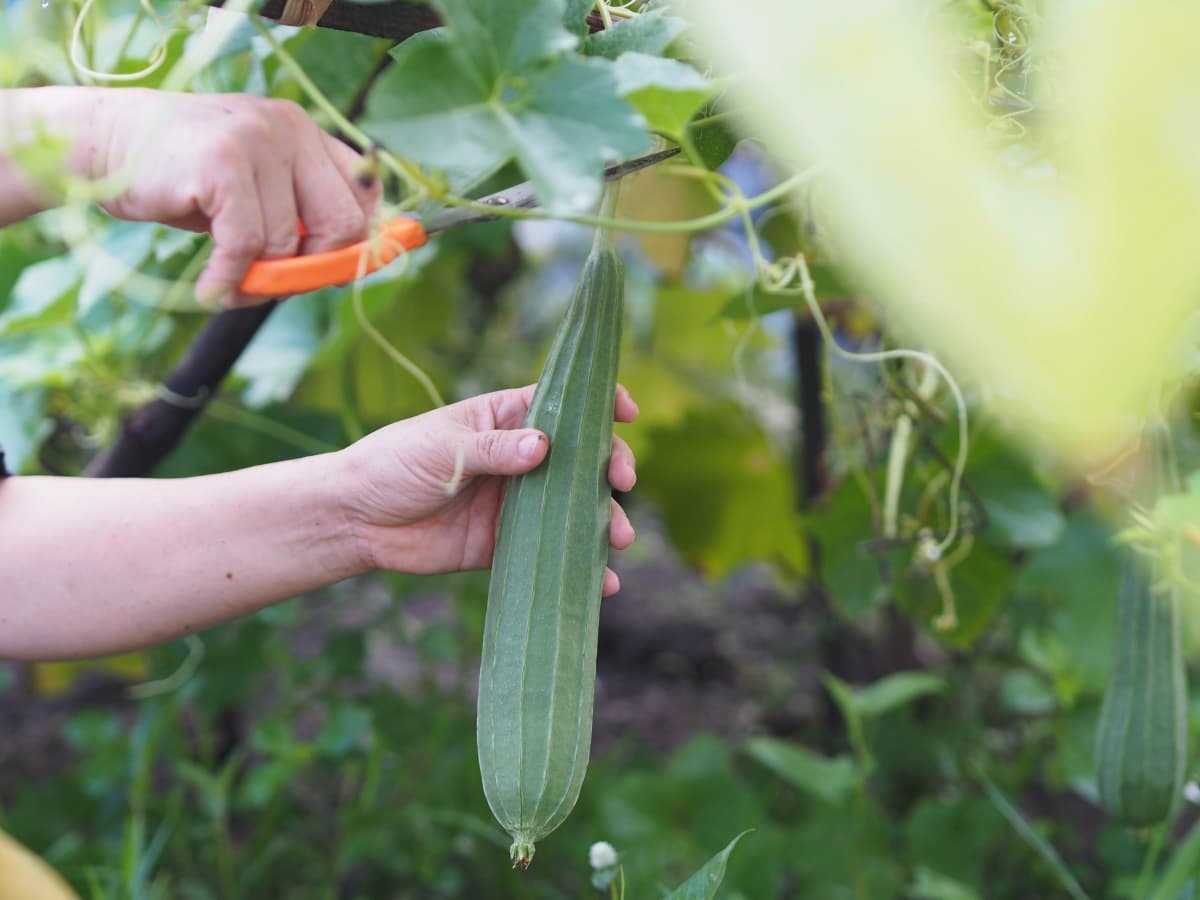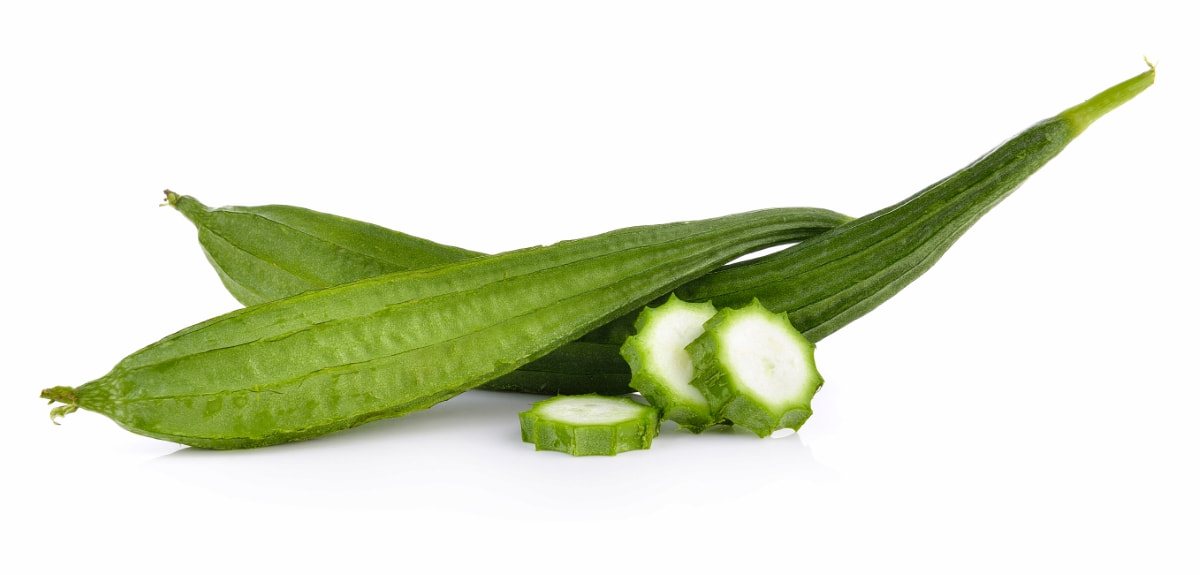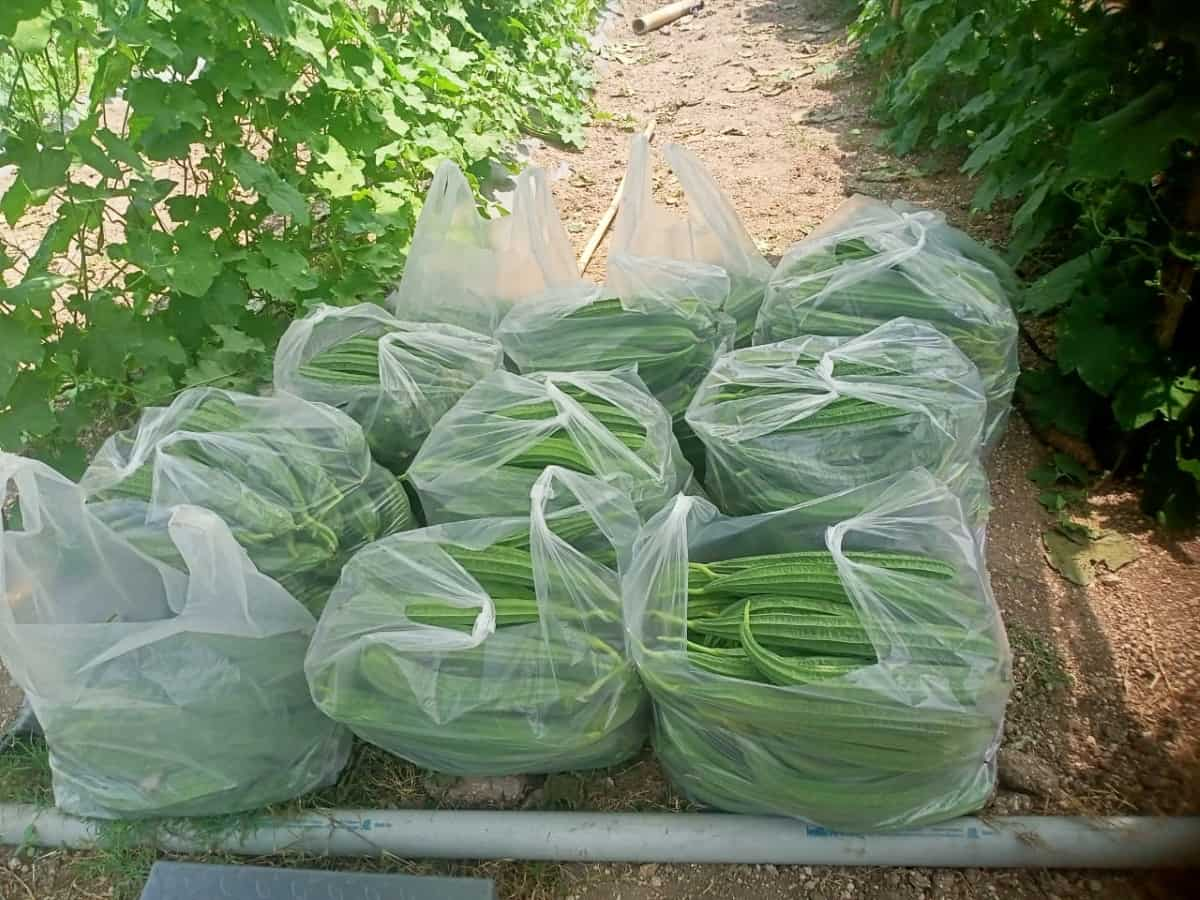Ridge gourds, a popular vegetable in many gardens, can sometimes become bitter, affecting their taste and edibility. This bitterness can be due to various reasons, including the plant’s response to stress, diseases like the bitter gourd yellow mosaic virus, and environmental factors. Often, gardeners ask, “Why is my bitter gourd turning yellow?” which could be a sign of disease or nutritional deficiency.

Understanding the ridge gourd plant lifespan is crucial in managing its growth stages. Yellow bitter gourd, often found after storing in a fridge, may raise the question, “Can we eat yellow bitter gourd?” It’s usually safe but less palatable. Growing ridge gourds at home, especially in pots, requires knowledge about their care to avoid these issues.
This article will investigate strategies for preventing ridge gourds from developing a bitter taste, with a specific focus on factors such as soil pH, choice of plant varieties, watering practices, fertilization methods, pest management, climate considerations, and the potential benefits of companion planting.
Prevent Ridge Gourds from Turning Bitter
Optimal Soil pH for Ridge Gourds to Avoid Bitterness
A slightly acidic to neutral pH range is ideal for ridge gourd cultivation. Testing the soil pH regularly and adjusting it using natural amendments helps maintain this balance. Keeping the soil pH within the optimal range ensures the plant absorbs the necessary nutrients effectively, thus reducing the risk of bitterness. This practice also helps in preventing diseases that can lead to bitterness, such as the bitter gourd yellow mosaic virus, by creating an unfavorable environment for the pathogens.
Choose the Right Variety of Ridge Gourd
Selecting the appropriate variety of ridge gourd is essential in preventing bitterness. Some varieties are naturally less prone to becoming bitter, so choosing these can significantly reduce the risk. Research and consult local nurseries or gardening communities to find the best variety suitable for your region’s climate and soil conditions. Opt for varieties known for their sweetness and resistance to common diseases like the bitter gourd yellow mosaic virus, which often contribute to bitterness.
Proper Watering Techniques for Ridge Gourds
Ridge gourds require consistent moisture, but overwatering can lead to root rot and stress the plant, resulting in bitterness. Similarly, underwatering can stress the plant, making it prone to bitterness. Employing a regular watering schedule, possibly early in the morning, ensures the plant receives adequate water without being waterlogged. Monitoring soil moisture and adjusting watering frequency based on weather conditions is also crucial for healthy growth.
Best Fertilizers for Ridge Gourds to Prevent Bitterness
Using the right fertilizers is vital in providing ridge gourds with the necessary nutrients to grow healthily and avoid bitterness. Organic fertilizers like compost or well-rotted manure are excellent choices as they release nutrients slowly and improve soil structure. Avoid over-fertilization, especially with nitrogen-heavy fertilizers, as this can promote rapid growth at the expense of fruit quality, potentially leading to bitterness. A balanced approach to fertilization, considering the plant’s growth stage and soil nutrient levels, will support healthy growth and flavorful fruits.
In case you missed it: How to Pollinate Ridge Gourd Flowers: Hand Pollination, Natural Pollination Methods, and Tips

Effective Pest Control Methods for Ridge Gourds
Pest control is crucial in maintaining the health of ridge gourds and preventing bitterness. Pests can stress the plants and transmit diseases like the bitter gourd yellow mosaic virus, contributing to bitterness. Regularly inspecting plants for pests and signs of disease, such as the yellowing of leaves, which is a symptom of the bitter gourd yellow mosaic virus, is important.
Employing natural pest control methods, such as neem oil or insecticidal soaps, can effectively manage pests without harming the plants. Additionally, practicing good garden hygiene, like removing debris and diseased plant material, helps prevent pest infestations.
Maintain Ideal Temperature and Climate Conditions for Ridge Gourd Cultivation
Ridge gourds thrive in warm, sunny conditions, and maintaining these ideal climate conditions is essential for preventing bitterness. Extreme temperature fluctuations can stress the plants, leading to bitterness. Providing shade during the hottest part of the day and using mulch to regulate soil temperature can be beneficial. Protecting the plants from extreme weather conditions, such as heavy rains or high winds, also helps maintain a stress-free environment conducive to sweet, non-bitter fruits.
Companion Plants for Ridge Gourds to Deter Bitterness
Certain plants, when grown alongside ridge gourds, can improve soil health, deter pests, and create a more favorable growing environment. For example, marigolds can repel harmful insects, while beans can fix nitrogen in the soil, providing essential nutrients to the ridge gourds. Choosing the right companion plants not only supports the healthy growth of ridge gourds but also contributes to a more diverse and resilient garden ecosystem.
In case you missed it: 9 Common Problems with Ridge Gourd Plants: Treatment and Solutions

Pruning and Training Techniques for Ridge Gourd Vines
Pruning and training ridge gourd vines are essential for healthy growth and preventing bitterness. Regular pruning helps in air circulation and sunlight penetration, which are crucial for the plant’s health. Remove dead or diseased leaves and branches to prevent the spread of diseases like the bitter gourd yellow mosaic virus.
Training the vines on a trellis or support system not only saves space but also reduces the risk of diseases and pest infestations by improving airflow around the plant. This practice encourages healthier fruits and reduces the chances of them turning bitter.
Best Harvesting Practices to Prevent Bitterness in Ridge Gourds
Harvesting ridge gourds at the right time is key to avoiding bitterness. Overripe gourds tend to be more bitter, so it’s important to harvest them when they are young and tender. Regularly check the gourds for size and firmness, and harvest them when they are at their peak for the best flavor. Gentle handling during harvesting is also important to avoid damaging the fruits, as bruises can lead to bitterness. Immediate storage in a cool, dry place after harvesting helps preserve their taste and prevent them from turning yellow and bitter.
Prevent Diseases that Can Cause Bitterness in Ridge Gourds
Disease prevention is crucial in maintaining the sweetness of ridge gourds. Diseases like the bitter gourd yellow mosaic virus not only affect the plant’s health but also its fruit quality, leading to bitterness. Implementing good garden practices such as crop rotation, proper spacing, and sanitation can significantly reduce the risk of diseases. Using resistant varieties and applying organic fungicides or pesticides when necessary helps in controlling disease outbreaks.
In case you missed it: How to Increase Female Flowers in Ridge Gourd: Explained in 10 Simple Steps

Conclusion
Cultivating ridge gourds that are free from bitterness involves a combination of good gardening practices, from choosing the right soil conditions and varieties to implementing effective pruning, watering, fertilization, and pest control methods. Attention to detail in harvesting and disease prevention further ensures the production of sweet and healthy fruits.
By understanding and applying these techniques, gardeners can enjoy a bountiful harvest of ridge gourds that are not only delicious but also safe and nutritious to eat. With patience and care, even a novice gardener can successfully grow ridge gourds at home, whether in pots or a garden, ensuring a rewarding gardening experience.
- Feed Your Flock for Less: Top 10 Tips to Save on Chicken Feed
- Ultimate Guide to Ossabaw Island Hog: Breeding, Raising, Diet, and Care
- Hatching Answers: The Top 10 Reasons Your Chickens Aren’t Laying Eggs
- Eggs and Economics: Breaking Down the Cost of Raising Backyard Chickens
- Defend Your Greens: Proven Methods to Keep Iguanas Out of Your Garden
- Ultimate Guide to Cinnamon Queen Chicken: A Comprehensive Guide for Beginners
- Ultimate Guide to California Tan Chicken: Breeding, Raising, Diet, Egg-Production and Care
- Ultimate Guide to Marsh Daisy Chicken: Breeding, Raising, Diet, and Care
- 10 Types of Chicken Farming Businesses You Can Start for Profits